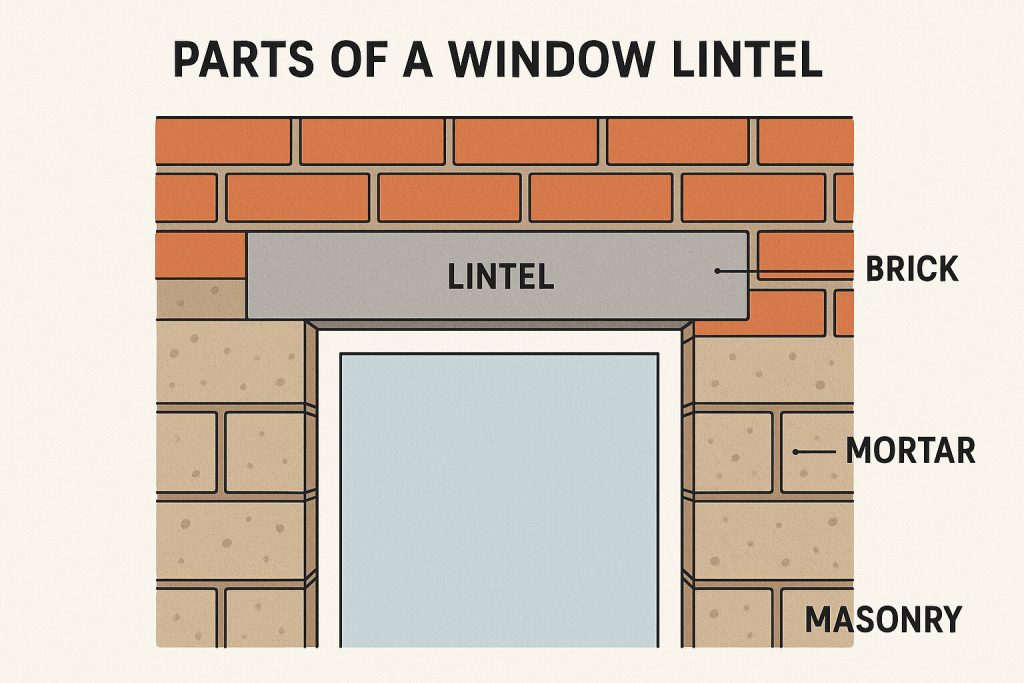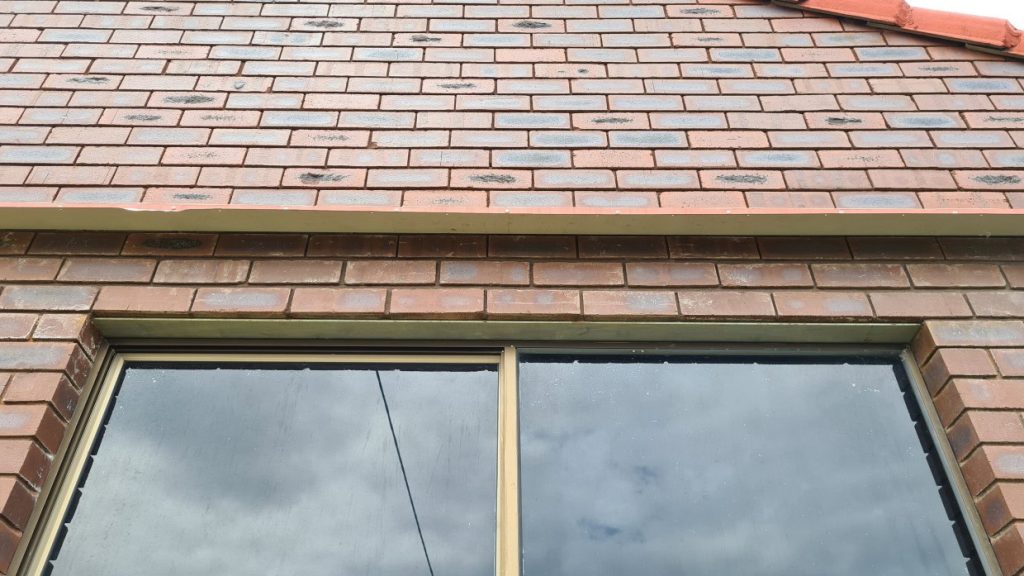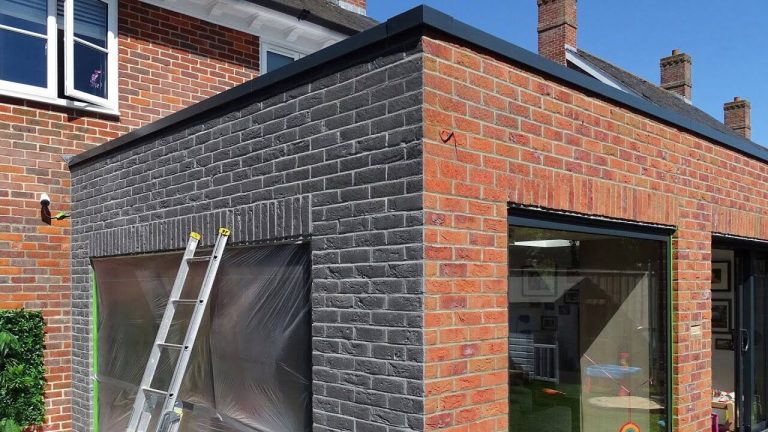When it comes to preserving the integrity and beauty of a brick home, few things are as crucial — yet commonly overlooked — as the lintel. Especially for older homes or those exposed to shifting climates, the lintel replacement for brick homes can become an urgent necessity.
At Brick Restoration, Inc., we’re committed to helping homeowners understand the signs, risks, and solutions for failing lintels, ensuring your home’s structure remains safe and sound.
What is a Lintel and Why It Matters in Brick Homes
Learn about what a lintel actually is and why it’s so important for the structure of your brick or masonry home. In brick homes, a properly functioning lintel is essential for maintaining structural integrity and preventing costly damage. Neglecting a failing lintel can lead to visible cracks, water intrusion, and even compromised safety.

Definition of a Lintel
A lintel is a horizontal support placed above windows and doors, crucial in distributing the weight of the wall above. In brick homes, it plays an essential structural role.
Role in Structural Integrity
Without a lintel, brickwork can sag or collapse over time. The lintel acts like a bridge, carrying loads away from openings and transferring them to stable sections of the wall.
Common Materials Used
The most common materials for lintels in brick homes include:
- Steel: Durable and load-bearing, but prone to rust.
- Concrete: Sturdy and affordable, often used in modern constructions.
- Stone or Wood: Found in historic homes; charming but often less reliable over time.
Causes of Lintel Failure
Lintel failure in brick homes is often the result of a combination of age, environmental factors, and improper construction practices. Over time, lintels can deteriorate due to moisture exposure, rust, shifting foundations, or poor drainage. When these issues go unaddressed, the lintel may weaken or corrode, leading to visible cracks, brick displacement, or structural instability.
Understanding the common causes of lintel failure is the first step in protecting your home from more serious and expensive repairs down the line. Keep reading to learn more about the various causes of lintel failure.
Water Infiltration
Rain and humidity can penetrate brick mortar and corrode metal lintels. Over time, this rust expands, weakening the support.
Rust and Corrosion
Steel lintels are particularly susceptible to rust, which can swell and crack the surrounding brickwork.
Foundation Movement
Shifting foundations cause stress on the building, which may exceed the capacity of an old or weakened lintel.
Poor Original Installation
Improper alignment or inadequate mortar use during construction can lead to premature lintel failure.
Top 10 Signs You Need Lintel Replacement
- Cracks Above Windows or Doors – These are tell-tale signs of lintel strain.
- Sagging Brickwork – Bricks start to dip or bow where the lintel is failing.
- Rust Stains – Reddish streaks on bricks indicate rusting steel lintels.
- Bowing Walls – Walls that bulge outward signal structural distress.
- Loose or Bulging Bricks – Bricks around openings may protrude or fall out.
- Gaps Between Bricks and Windows – Separation occurs as support weakens.
- Window Misalignment – Crooked windows can point to uneven load distribution.
- Interior Wall Cracks – Structural stress sometimes shows indoors first.
- Difficulties Opening/Closing Doors – Warping can affect door functionality.
- Visible Lintel Damage – Corroded or cracked lintels are a direct red flag.
Risks of Ignoring Lintel Issues
Ignoring lintel issues can lead to much more than cosmetic damage—it can compromise the safety and structural integrity of your home. What starts as a small crack or minor sagging can quickly escalate into widespread brick displacement, water infiltration, and even collapse of the affected area.
Left unaddressed, these problems can result in costly repairs, reduced property value, and potential safety hazards. Timely attention to lintel problems is essential to avoid long-term damage and protect your investment.
Structural Collapse
If neglected, a failed lintel can cause entire sections of a wall to collapse, creating safety hazards.
Increased Repair Costs
Delaying lintel replacement can lead to extensive brick damage, dramatically increasing restoration costs.
Water Damage
Failed lintels allow moisture to seep into walls, promoting mold and wood rot.
Decreased Property Value
Structural issues can lower a home’s market value and discourage potential buyers.
Step-by-Step Lintel Replacement Process
Learn about the step-by-step process that we take for lintel replacement in brick and masonry homes to ensure a safe and effective repair.
1. Inspection
A structural expert assesses the damage and identifies whether a full replacement or partial repair is necessary.
2. Temporary Support Installation
Before removal, supports are placed to hold the weight above the opening.
3. Removing Old Lintel
Damaged materials are carefully taken out to avoid additional brick disruption.
4. Installing New Lintel
A new, corrosion-resistant lintel is fitted to code specifications.
5. Restoring Masonry
Brickwork is reconstructed to match the original aesthetic, ensuring seamless restoration.
Cost of Lintel Replacement for Brick Homes
The cost of a lintel replacement on a brick or masonry home can vary due to various factors. Keep reading to learn about those factors and the average price range that you can expect when replacing a damaged lintel on your home.
Factors Affecting Cost
- Size and location of the opening
- Type of lintel used
- Brickwork condition
- Accessibility of the site
Average Price Range
Typically, costs range from $500 to $2,500 per lintel, depending on severity and materials.
Hidden Fees to Watch Out For
- Permit fees
- Scaffold rental
- Brick matching costs
DIY vs Professional Lintel Replacement
While some home repairs are well-suited for DIY enthusiasts, lintel replacement is not one of them. Replacing a lintel involves structural considerations, specialized tools, and a deep understanding of masonry techniques to ensure the load is properly supported throughout the process. Attempting a DIY fix can lead to further damage or unsafe conditions if done incorrectly.
Hiring a professional ensures the job is done safely, up to code, and with lasting results—protecting both your home’s structure and your peace of mind.
Risks of DIY
Handling lintels without expertise can cause further structural damage or injury.
When to Hire a Professional
If cracks extend above multiple openings or bricks are falling out, call an expert immediately.
What to Look for in a Contractor
- Licensing and insurance
- Masonry restoration experience
- Verified reviews and local references
How Brick Restoration, Inc. Can Help
When you’re looking for a qualified, experienced, and reputable masonry contractor to address your home’s lintel issues, you can rest assured that you’re in good hands with Brick Restoration, Inc.
Experience and Expertise
With decades of masonry experience, BrickRestoration.com specializes in safe and lasting lintel replacements.
Warranty and Service Quality
All work is backed by a satisfaction guarantee and comprehensive service warranties.
Customer Testimonials
Thousands of happy homeowners trust BrickRestoration.com for their brick repair needs. (View testimonials on our website.)
Maintenance Tips to Extend Lintel Life
- Regular Inspections: Check annually for cracks or discoloration.
- Waterproofing: Use sealants on vulnerable areas to prevent moisture.
- Proper Drainage: Ensure downspouts direct water away from the structure.
How to Choose the Right Lintel Material
When it comes to choosing the right lintel replacement material for your brick or masonry home, you have a few options and our expert team will help you make the best decision. Keep reading to learn more about the different lintel materials available as well as some important considerations to take into account when making your decision.
Steel vs Concrete vs Stone
- Steel: Strongest option, ideal for large spans.
- Concrete: Affordable and durable.
- Stone: Best for heritage homes, though more expensive.
Climate Considerations
Coastal or humid areas may benefit from galvanized or coated steel.
Cost and Durability Factors
While concrete is budget-friendly, steel offers long-term durability when properly maintained.
Local Building Codes and Permits
When it comes to lintel replacement, understanding and complying with local building codes and permit requirements is crucial. These regulations are in place to ensure structural safety and proper construction practices. In many areas, a permit is required for any structural modifications, including lintel replacement, and failing to obtain one can lead to fines, delays, or problems during future home inspections or sales.
Working with a professional who is familiar with local codes helps ensure your project is completed legally, safely, and up to standard.
Permit Requirements
Many areas require permits for structural work. Check with your municipality.
Inspection Guidelines
Post-replacement inspections ensure code compliance and safety.
Legal Compliance
Work done without permits may lead to fines or issues during home resale.
Common Myths About Lintel Replacement
- Only Old Homes Need It: Even modern homes can suffer lintel issues due to improper installation.
- Cracks Are Purely Cosmetic: Hairline cracks may signal deeper problems.
- Any Contractor Can Do It: Only specialists should handle structural repairs.
FAQs About Lintel Replacement for Brick Homes
Q: How long does it take to replace a lintel?
A: Most replacements are completed in 1–2 days, depending on severity.
Q: Can lintel work be done in winter?
A: Yes, though cold temperatures may affect mortar curing time.
Q: How do I spot early lintel damage?
A: Look for stair-step cracks or rusty streaks above openings.
Q: Is replacement always necessary?
A: Sometimes, minor reinforcement or patching can suffice—an inspection will determine the best course.
Q: What’s the best time of year for lintel work?
A: Spring and fall offer ideal conditions for masonry repairs.
Q: How often should lintels be inspected?
A: Every 2–3 years, or annually if your home is older than 30 years.
Conclusion: Don’t Delay – Secure Your Brick Home Today
Lintel issues are more than just cosmetic. Addressing them quickly ensures the safety, stability, and value of your home. With our expert services you can rest easy knowing your home is in capable hands.
Whether you’re seeing the early signs of damage or need urgent repair, now is the time to act.






